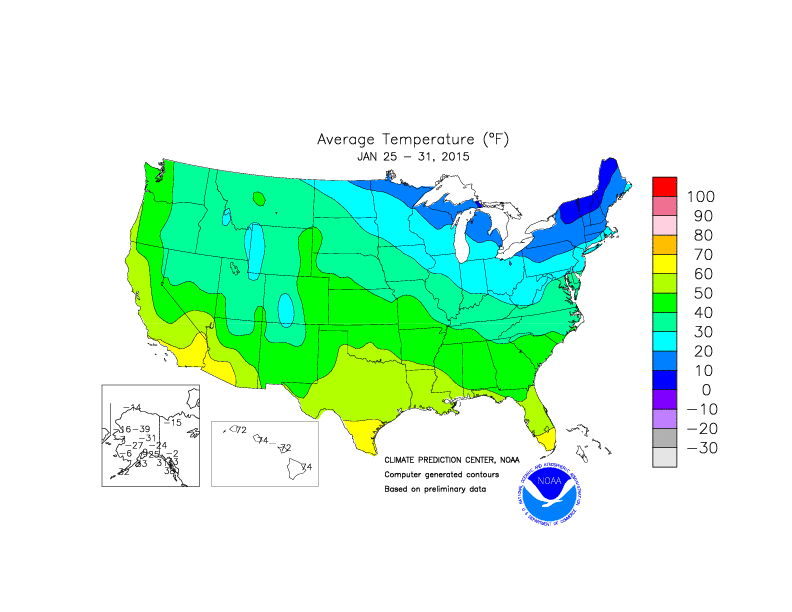Spring
Fever
Testing
a Temperature Hypothesis About Robin Migration
Background
An age-old hypothesis about robin migration says that robins arrive
in an area when the average temperature is 36°F. Is it accurate?
Why not test the hypothesis yourselves? Begin the study about a month before the robins' average arrival date in your area.
Exploration
1. Look at the map of average temperatures. The lines and colored bands show places that had the same average temperatures last week. The lines will 'migrate' across the continent as temperatures warm in the spring. (Come back to see and print the latest map each week.)
- Find the approximate location of your hometown. What was its average temperature last week?
- Name the states or regions that had a 36°F average temperature.
- Name
the states or regions you think were too cold for robins.
(Definition: The lines that connect places with the same average temperatures are called isotherms.)
2. Calculate and plot your average weekly temperature. Use our Average Weekly Temperatures data sheet and follow the example shown in the sample graph.
3.
Watch for Robins!
Continue to calculate your average weekly temperature and
keep your eyes peeled! When your robins show up, decide whether it was before, when, or after your average weekly temperature reached 36°F.
| Time:
1 period + occasional time over several weeks |

Map
of Average Temperatures
(Last week)
As of last week, where was the average temperature 36°F?
Data
Sheet
For recording and calculating average weekly temperatures
Sample
Graph
of average weekly temperatures




